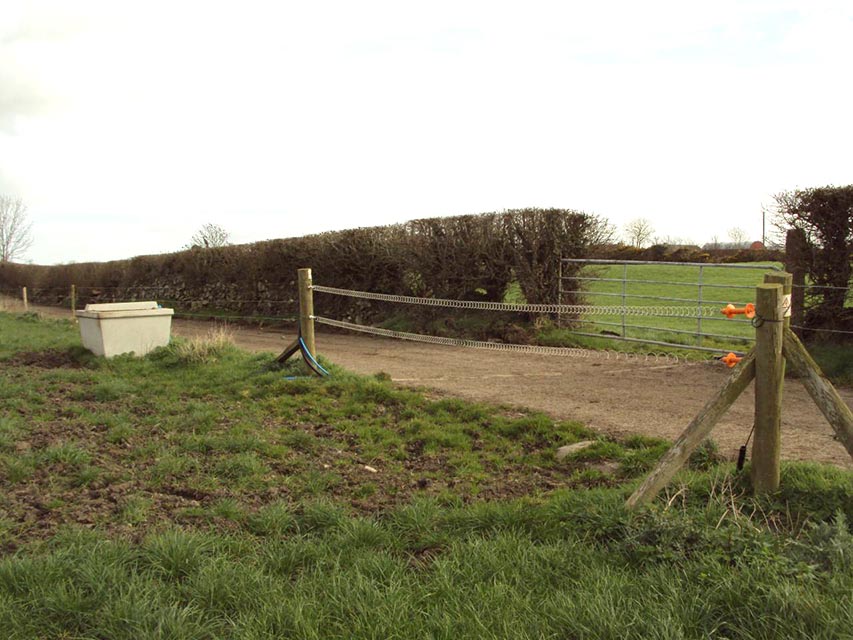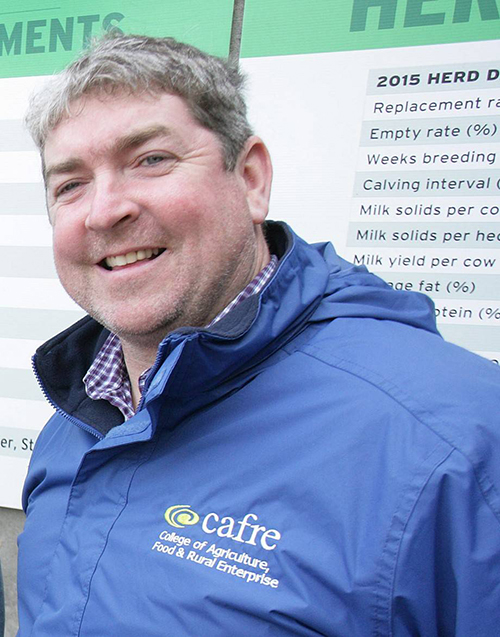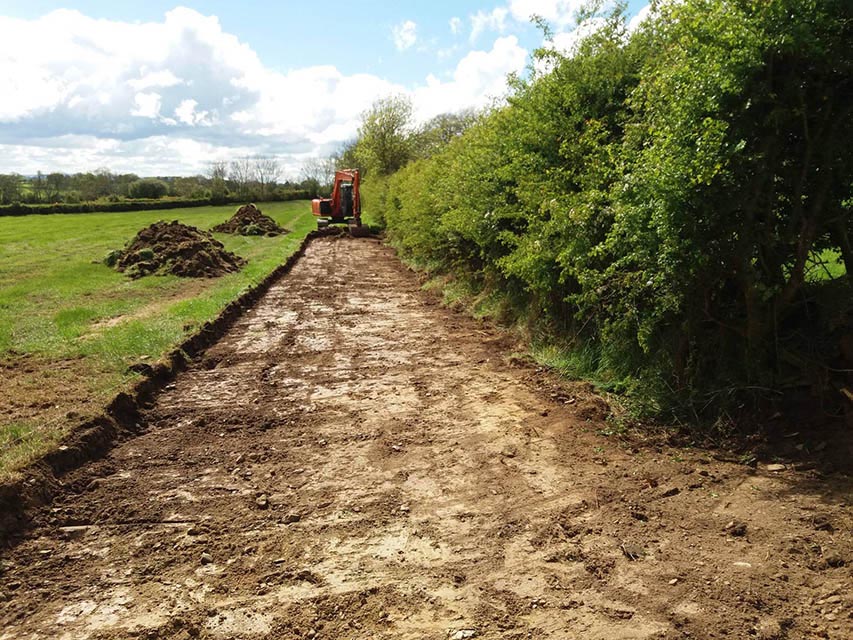Planning ahead for spring grazing on the Kirkwood Farm at Millisle.
A recent DAERA Business Development Group (BDG) meeting on the Kirkwood farm at Millisle highlighted a number of priories for group members to re-focus their attention on areas where they can positively influence or change their own individual farms writes Conail Keown.
The top priority on most farms this month should be setting the grazing platform up for next spring. Grazed grass has been proven with research and independent studies to be the cheapest feed available for milking cows, and should therefore be the primary element in a cow’s diet.
With this in mind, ensuring good grass availability next spring, and that herds are grazing it as early as possible will help improve farm margins for the year ahead.
Making grass work
On many farms concentrates account for two thirds of direct milk production costs, yet at the same time grass is often under-utilised. In many cases cows are grazing grass covers that are much too heavy, while being supplemented with unnecessarily high levels of concentrate.
Increasing utilisation of grazed grass in the diet and reducing concentrate feeding will reduce production costs. October grass has the potential to produce 14- 15 litres of milk per cow per day.

With the good grazing conditions in late September, combined with quality swards and the availability of after-grass, many farms had the potential to save up to 4 kg of concentrate per cow per day, yet many farms are not achieving this.
BDG members have been proactively targeting late lactation cows for grazing in October as these cows can be sustained on grass with very little supplement.
Cows yielding less than 15 litres should not receive any concentrates but higher yielding cows will need to be supplemented.
Assuming 15 litres from grass, Table 1 below indicates the required daily feed level at various yields:
Table 1
| Yield (litres/day) | 20 | 25 | 30 | 35 |
| Concentrates (kg/cow/day) | 2.2 | 4.5 | 6.75 | 9 |
Closing the grazing platform
Planning ahead now with some basic but fundamental steps on grass budgeting will guarantee grass availability for the herd next spring. BDG member’s herds will be observing the following rules and guidelines for autumn grass management in an attempt to set the farm up for spring turnout.
- Start closing paddocks from the 1st of October – don’t graze these paddocks for the rest of the year.
- Graze 100% of the farm by the 5th of November – graze paddocks with good roadway access first as these will be grazed first in the spring.
- For those that measure grass – Target closing average farm cover (AFC) of no less than 2000kg total cover in early November.
- Feed concentrate or house some stock if behind grass targets and unlikely to reach an AFC of 2000kg before November. This will require weekly grass measurement and working with an autumn budget.
- Don’t let any other stock graze during the winter.
- Spread slurry on paddocks as they are closed.
- Spread nitrogen in early February.
Farmer Focus: Kirkwood Family – Millisle, Co Down.
The Kirkwood farm is predominantly an autumn calving farm with 145 cows plus replacement stock on the 100% grassland farm.

Calving started on the farm on 28 August this year with 20 heifers, and 35 cows calved to date. Based on pregnancy scan results approximately 75% of the herd will calve before Christmas.
The Kirkwood’s are focused on improving milk produced from grass on the farm through improved fertility performance in the herd and also increasing the number of days at grass each year on the farm.
The objective is to compact the calving profile in the Autumn and Winter months allowing cows to be re-bred before returning to grazed grass in early spring.
The grazing block on the farm extends to 32 ha of relatively dry free draining soil. Soil analysis on the farm suggests fertility is good with the majority of paddocks on target for soil pH, phosphate and potash. Reseeding is on the agenda for next year on the grazing block, however improving infrastructure is higher up that agenda for the Kirkwood’s.

A section of the grazing platform which is traditionally cut for silage each year before coming into the rotation requires improved access.
A hard-core laneway with multiple access points to the paddocks is required. This investment will allow these paddocks to be included in the grazing rotation from the start of grazing season.
From a grazing management perspective, the grazing block is well established with laneways and good access to paddocks on 75% of the grazing area.
The new laneway will improve the situation on farm with better access to paddocks while at the same time limiting damage to soil at the shoulders of the season. While the farm soil is free draining grazing traditionally only gets started in early April. This is a consequence of late calving rather than poor grazing infrastructure.
Moving forward the Kirkwood’s are focused on getting cows grazing much earlier in the season. This will improve the business performance by getting more grazed grass into the cows, ultimately increasing milk produced from grass.
An additional advantage with this early turn out approach is the establishment of the grazing wedge on the farm. This sets the farm up in terms of grass quality for subsequent grazing rotations throughout the year.
Heavy rainfall in the past five days of early October has stopped grazing on the farm. The final rotation on the farm started on 27September with paddocks closed from that point.
The plan is to get back out grazing with late lactation cows when conditions improve and target the few remaining paddocks with heavy grass covers. If conditions don’t improve young stock can be used to clean out the remaining paddocks.
In summary, the continual improvements in efficiency on this farm are typical of the businesses represented in this BDG whereby increased focus on grazing and forage result in improved profits.
The learning and encouragement experienced within the group gives members the confidence to make decisions they perhaps otherwise would have put off and in every case the results speak for themselves when it comes to CAFRE Benchmarking.
The BDG Scheme is part funded by the EU Rural Development Fund.
























